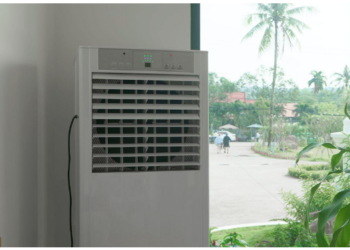Fixed Deposits (FDs) remain a popular investment choice in India due to their safety, guaranteed returns, and simplicity. However, maximising returns from FDs involves more than just selecting the highest FD interest rates in India. Navigating the nuances of Tax Deducted at Source (TDS) can significantly impact your net returns. Here are some tips to book an FD and effectively manage TDS deductions for maximum returns.
1. Research and Compare FD Rates
The first step in securing the highest FD rates in India is thorough research and comparison. Banks and financial institutions offer varying interest rates based on tenor, deposit amount, and prevailing economic conditions. Regularly comparing fd interest rates from different issuers, including public sector banks, private sector banks, and small finance banks, ensures that you can choose the best option. Websites and financial aggregators provide updated interest rate comparisons, making the research process more efficient.
2. Leverage Special FD Schemes
Banks often launch special FD schemes with higher interest rates for limited periods. These schemes are usually targeted at specific customer segments, such as senior citizens, women, or existing customers. Keeping an eye out for these special offers and being prepared to invest can enhance your returns.
3. Opt for Longer Tenors for Better Rates
Longer tenors typically attract higher interest rates compared to shorter ones. While it’s essential to align the tenor with your financial goals and liquidity needs, opting for a longer duration can boost your overall returns. It’s also advisable to check if the issuer offers the option to renew the FD at the same or a higher rate on maturity.
4. Split Your Deposits
Rather than investing a lump sum in a single FD, splitting your deposit into multiple FDs with varying tenors can be beneficial. This strategy, known as laddering, ensures liquidity at different intervals and reduces reinvestment risk. Additionally, if the TDS on a single FD exceeds the threshold, splitting deposits can help manage and potentially reduce TDS deductions.
5. Utilise Online and Corporate FDs
Corporate FDs, offered by Non-Banking Financial Companies (NBFCs), often provide higher interest rates than traditional FDs. However, it’s crucial to assess the credit rating of the company before investing to ensure safety. Online FDs also sometimes offer better rates due to reduced operational costs for the issuers.
6. Consider Benefits for Senior Citizens
Senior citizens are usually eligible for higher FD rates, typically 0.25% to 0.50% more than the regular rates. If you fall into this category or are investing on behalf of a senior family member, take advantage of these preferential rates.
7. Understand TDS Provisions
TDS is deducted at 10% on interest earned from FDs if the interest exceeds ₹40,000 per annum (₹50,000 for senior citizens) as per current tax laws. If the depositor does not provide their PAN, the TDS deduction on FDs is 20%. Understanding these provisions helps in planning and managing your investments better.
8. Submit Form 15G/15H to Avoid TDS
If your total income is below the taxable limit, you can submit Form 15G (for individuals below 60 years) or Form 15H (for senior citizens). These must be provided to the issuer at the beginning of the financial year. This declaration prevents the issuer from deducting TDS on the interest income. Check your eligibility and submit these forms to avoid penalties.
9. Calculate Post-tax Returns
When comparing FD rates, consider the post-tax returns rather than the nominal rates. Higher nominal rates might not necessarily translate into higher net returns if the TDS deduction is significant. Use online calculators or consult a financial advisor to understand the impact of taxes on your returns.
10. Invest in Tax-saving FDs
Tax-saving FDs offer deductions u/s 80C of the Income Tax Act, 1961. Investors can enjoy tax benefits of up to ₹1.5 Lakhs per annum under this section. These FDs have a lock-in period of 5 years. This option can provide both tax savings and moderate returns.
11. Reinvest the Interest Income
To maximise returns, consider the option of reinvesting the interest income instead of receiving it periodically. This approach benefits from compounding, where the interest earned also starts earning interest, leading to higher overall returns.
12. Monitor FD Rates Regularly
Interest rates fluctuate based on monetary policies and economic conditions. Regularly monitoring FD rates ensures that you can reinvest at the highest possible rates when your FDs mature. Staying informed about rate changes helps in making timely investment decisions.
13. Choose Cumulative vs. Non-Cumulative FDs
Cumulative FDs reinvest the interest earned, which is paid out at maturity along with the principal. Non-cumulative FDs pay out interest at regular intervals (monthly, quarterly, etc.). Choosing cumulative FDs can result in higher returns due to the power of compounding, although it depends on your need for regular income.
14. Review Your Investment Periodically
Regularly reviewing and reassessing your investment portfolio helps in aligning it with your financial goals and market conditions. This includes evaluating the performance of your FDs and reinvesting or redirecting funds as needed.
Securing the highest FD rates in India requires a combination of strategic planning, continuous monitoring, and understanding of tax implications. By researching and comparing rates, leveraging special schemes, and effectively managing TDS deductions on FDs, investors can maximise their returns.
Utilising tools like Form 15G/15H, opting for cumulative FDs, and considering tax-saving options further enhance the net returns. Remember, prudent financial planning and a disciplined approach are key to making the most of your FD investments and ensuring a secure financial future.

















